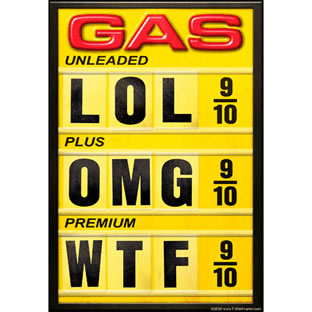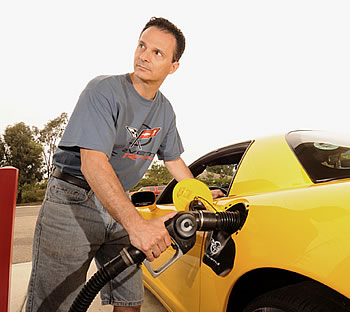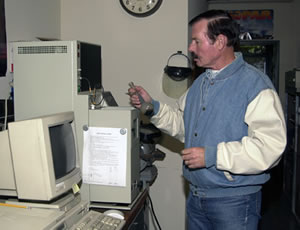Corvette Action Center Deep Dive Series: Gasoline for your Corvette - Page 1 of 8
 |
 |
Image: Author |
Image: Author |
Page 1 of 8
© 2009 by Hib Halverson
No use without permission, All Rights Reserved
![]() Discuss this article
Discuss this article
Seems we're always in a hurry when we get gas. We rush to work. We're speeding to get to the start of the weekend's club run on time. Or, it's the first day of your two-week vacation and we want to get out of town. We swipe the card in the pump, stick the nozzle in the fuel filler, select premium fuel then hold that lever wide open and watch the numbers flick, but...have you ever thought a second about what we all pump into our Vettes' fuel tanks?
Gasoline is a blend of volatile, flammable, liquid hydrocarbons. "Volatile" means it readily vaporizes. "Flammable" means its vapor is combustible. "Hydrocarbons" are compounds of hydrogen and carbon. When they're burned in an engine, expanding gases apply force to its pistons and that's what makes your Corvette go.
To extract specific hydrocarbons which make gasoline, crude oil is "refined" by one or a combination of: "distillation", "cracking," or "polymerization". The first boils crude in a vacuum to separate it into various factions, of which gasoline is one. The other two chemically modify hydrocarbons to give them desired properties.

Engineer, Tim Wusz, at work in Rockett Brand's gasoline quality lab. Most racing gasoline undergoes additional quality control verification steps over what's done at the refinery. One of Wusz's main tasks is overseeing Rockett's QC processes. Image: Author.
Research for this article led the Corvette Action Center to Tim Wusz, Vice President of Engineering at Rockett Brand Racing Fuel. Wusz has worked for Rockett and its predecessors, 76 Performance Products Division of Conoco/Phillips, Tosco Corporation, Unocal, and Union Oil Company, since 1965, spending much of that time developing gasolines for street high performance and racing engines. Wusz is a former drag racer, a long-time musclecar nut and a one-time, gen-two ZR-1 owner.
The Basics of Blending:
"A 'barrel' of crude oil," Tim told us, "is 42 gallons and about 50% ends up as gasoline. After refining, we're left with gasoline 'components' or 'blend stocks,' segregated in tanks connected to a 'blend header' containing computer-controlled valves which meter flow from each tank. Gasoline is mixed in this blend header and then subjected to quality control such as 'on-line' octane testing and sampling for chemical analysis.
"During blending, we select various hydrocarbons, depending what we want from the gasoline. For example, with gas for street applications, warm-up is critical. If the engine hesitates or dies during warm-up, exhaust emissions and customer satisfaction are impacted. For racing applications, we're more concerned with octane quality and resistance to vapor lock."
To burn in an engine's cylinders, gasoline must vaporize. "Volatility" quantifies gasoline's tendency to vaporize. Automotive gasoline sold to consumers, ie: "pump gas," is blended for high volatility to insure easy engine starts and good drivability during warm-up. Additionally, pump blends are seasonally adjusted for consistent drivability. In cold weather, volatility is increased slightly and in warm weather, it's reduced just a little. Racing gas is almost always blended for less volatility to resist vapor lock. Also, racing gas blends are not varied seasonally.
You'd think the challenge in blending gasolines would be quality control but, according to Tim Wusz, "The biggest problem is meeting government requirements for volatility, octane, oxygen content, distillation curve and other things. I don't know if any one requirement is more difficult, but the combination makes the blending engineer's job challenging. California has its own requirements and is the only state that does. The rest of the country comes under slightly less restrictive, Federal requirements. At one time, we felt handicapped by California's requirements, but now, gasoline for California is better performance-wise than gas sold in any other part of the country. This benefit carries to unleaded racing gasolines sold for street use, too. Rockett Brand 100 is refined to California specifications and is capable of slightly better performance than if it was refined to Federal specifications."
